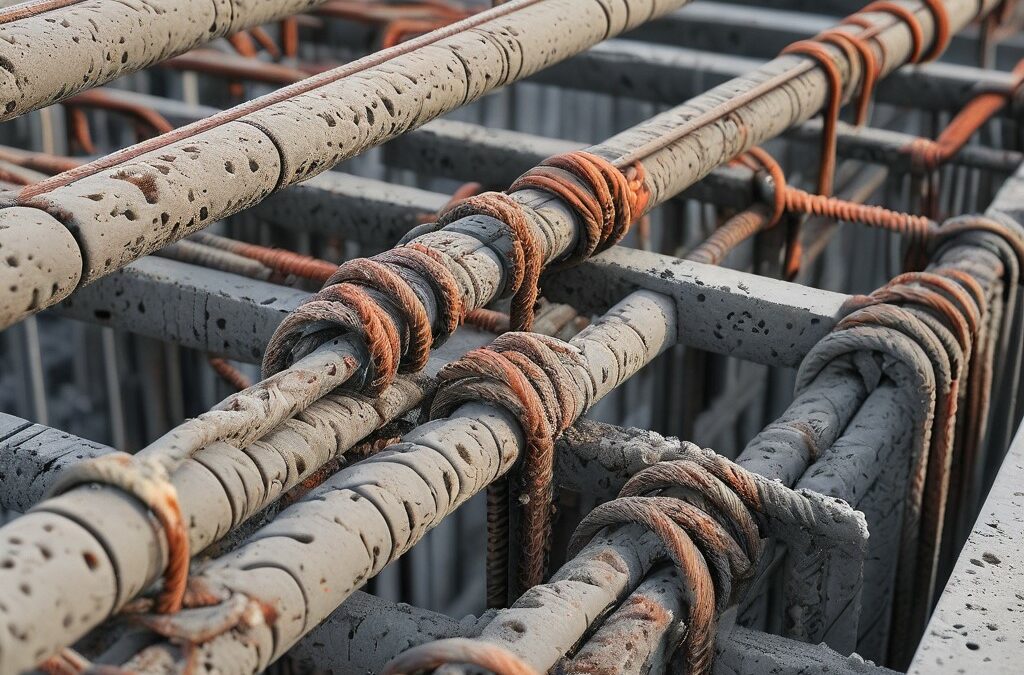The cart is empty!
Corrosion of reinforcing bars in concrete can significantly compromise the structural integrity and longevity of concrete structures. Inadequate attention to this phenomenon can have many consequences. Not only can it lead to extraordinary costs to repair and maintain concrete infrastructure, but, in the worst-case scenario, collapse of buildings and bridges can cause environmental issues and lead to loss of life.
Addressing this issue requires a combination of proper design, construction practices, and maintenance strategies.
Ensuring Proper Design and Construction
The most effective way to prevent corrosion of reinforcing bars is to ensure that the design and construction phases are executed correctly. This involves achieving the required depth and quality of cover for the reinforcement.
Common issues leading to corrosion include:
- Poor design
- Inadequate detailing
- Lack of control over the concrete mix
- Improper placement and curing
- Mis-location of reinforcement resulting in insufficient cover
Portland cement-based concretes inherently protect reinforcement by creating a low permeability and highly alkaline environment. This environment allows the steel to form a stable passive oxide film, which acts as a protective layer.
Maintaining suitable conditions is crucial for the steel’s protection. The concrete cover serves as a thick barrier that not only physically protects the steel but also contains chemical species that contribute to this protection. During the initial stages, the concrete cover can even self-heal minor cracks caused by shrinkage as it cures and reaches full strength.
Addressing Chloride Ions and Carbonation
Two primary initiators of reinforcement corrosion are chloride ions and carbonation.
Chloride ions can cause severe pitting corrosion even in highly alkaline environments. They can enter the concrete mix through accidental contamination, purposeful addition (historically, calcium chloride was used as a set accelerator), or from external sources such as marine environments and de-icing salts.
Carbonation occurs when carbon dioxide from the atmosphere enters the concrete cover and dissolves in the moisture present, forming carbonic acid. This acid neutralizes the alkalinity of the cement, reducing the protective environment for the steel. In high-quality concrete with adequate cover depth, carbonation progresses slowly, taking decades or even centuries to reach the steel. However, poor-quality concrete or insufficient cover depth can lead to the steel losing its protection within a few years, resulting in corrosion in the presence of moisture.
Current Standards and Practices
Modern standards and codes of practice provide comprehensive guidelines to mitigate corrosion risks from chlorides and carbonation under various exposure conditions. For particularly aggressive environments, such as offshore applications, additional protective measures are necessary. These measures also apply to existing structures where durability has been compromised due to historical design or construction shortcomings.
Protective Coatings and Repair Techniques
Applying coatings to the concrete surface is a widely adopted method to resist chloride ingress and carbonation, extending the service life of existing structures. Periodic recoating can further extend the protection duration. In cases where reinforcement corrosion has already occurred, removing loose concrete, cleaning the steel, and reinstating with fresh concrete (often modified repair mortar) can be effective, particularly for carbonated or mechanically damaged concrete with low chloride levels.
For chloride-contaminated concrete, complete removal of residual chloride is impractical. Instead, corrosion inhibitors or cathodic protection are employed. Corrosion inhibitors can be applied to the concrete surface or incorporated into the repair mortar to enhance its resistance to chlorides. When chloride levels are too high for inhibitors to be effective, or when a long service life extension is needed, cathodic protection becomes the viable alternative.
Cathodic Protection
Cathodic protection (CP), a technique dating back to 1824, is extensively used to protect buried or submerged structures such as pipelines and offshore facilities. In recent decades, CP has also been employed for reinforcing steel in concrete. This method involves creating an electrochemical cell that prevents the steel from corroding. CP systems require specialized design and should be installed by personnel certified to ISO 15257: 2017 standards.
The Bottom Line
Preventing corrosion of reinforcing bars in concrete primarily involves ensuring adequate design and construction practices to maintain a high-quality, alkaline, chloride-free environment. When this is not feasible, additional measures such as surface coatings, corrosion inhibitors, and cathodic protection are essential to control corrosion and extend the lifespan of concrete structures. Through diligent application of these strategies, the durability and integrity of reinforced concrete structures can be significantly enhanced.
What do You Want to Ask an Expert?
This article has been adapted from a question that was sent to the Institute of Corrosion and answered by Paul Lambert. The question was “What is the best way to prevent corrosion of reinforcing bars in concrete?”, and we first published Paul’s answer in our exclusive Corrosion Management magazine.
If you have a question to pose to our experts, please feel free to send it to us by email, and we’ll do our best to have the answer published for you.


